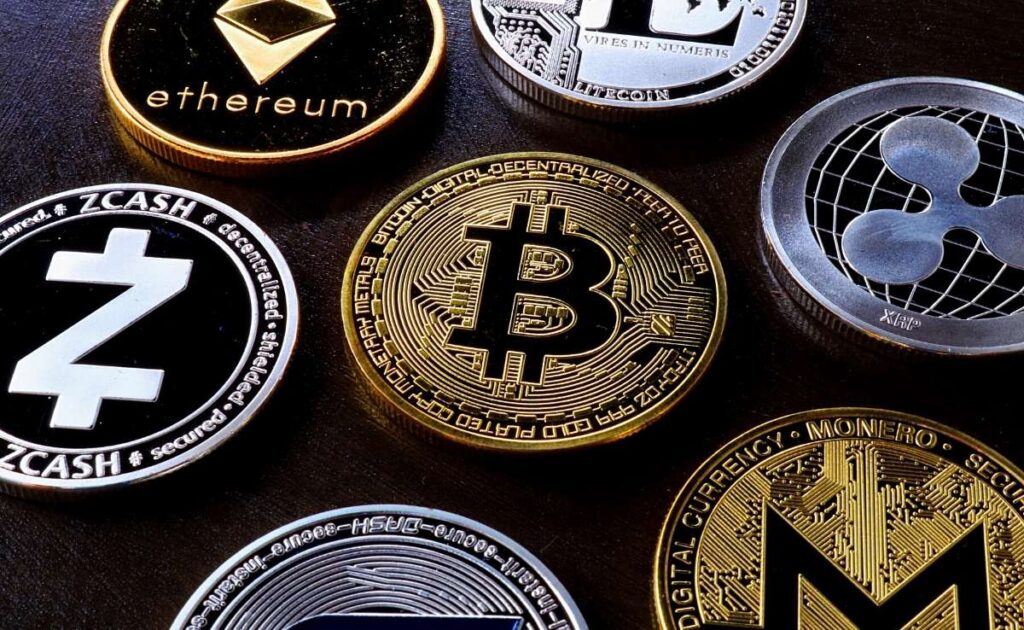To assist you in getting started, the market value of all current coins is listed below along with the top 10 cryptocurrencies.
Bitcoin (BTC)
Since it is essentially a need for everyone wishing to dangle their toes in this asset class, Bitcoin should be at the top of every list of the best cryptocurrencies to buy. By market capitalization, Bitcoin, which was initially created in 2009, is the most valuable cryptocurrency.
As of early September, BTC accounts for 39% of the entire market. Bitcoin’s value comes from its rarity and long history as a reliable store of value, earning it the moniker “digital gold” at times.
Only 21 million Bitcoins will ever be created; 19.1 million, or 91% of the total, are now in use. As the overall market collapsed in August, Bitcoin once again dropped below the $20,000 threshold.
Ethereum (ETH)
It appears that September will finally be the month that Ether has been waiting for, as the Ethereum blockchain will switch from the proof-of-work method to the proof-of-stake, or PoS, algorithm.
By switching to proof-of-stake, the well-known decentralized finance, or Defi, blockchain should be easier to scale, need less energy during transactions, and eventually have lower astronomical Ethereum gas rates, which function as a barrier to entry for anyone wishing to transact on the network.
The switch to PoS could reduce the network’s energy consumption by more than 99%, bringing Ethereum—the most well-liked blockchain for developers to build upon—into better alignment with its guiding principles.
Binance (BNB)
Tether is a stablecoin, which means that, unlike some other forms of cryptocurrencies, it is supported by fiat currencies such as U.S. dollars and the Euro and hence might keep a value resembling one of those denominations.
XRP
A few of the XRP creators also started the digital technology and payment processing business Ripple, which may be utilized on that network to exchange fiat money and other significant cryptocurrencies.
Terra (LUNA)
Terra is a blockchain-based stablecoin payment network that relies on preserving a balance between two separate cryptocurrencies. Stablecoins backed by Terra, like TerraUSD, have a value that is correlated with fiat money. They are balanced by the Luna platform, which also generates new stable Terran currencies.
Users are urged to burn their Luna coins in order to increase the quantity of Terra stablecoins when the price of a certain stablecoin increases above the value of the currency to which it is connected.
Users are urged to burn their Terra stablecoins to produce additional Luna when the value of Luna declines relative to its base currency in a manner similar to this. The use of the Terra platforms raises the worth of Luna.
Cardano (ADA)
Cardano differentiates from other cryptocurrencies because it adopted proof-of-stake validation first while entering the market a little later.
Because it eliminates the competitive, problem-solving aspect of transaction verification found in systems like Bitcoin, this technology uses less energy, speeds up transactions, and has less of an impact on the environment.
Similar to Ethereum, Cardano uses its native coin, ADA, to run smart contracts and decentralized apps. The rise of the Cardano ADA coin has lagged behind that of other significant cryptocurrencies.
Solana (SOL)
Solana was developed to assist the development of decentralized apps, smart contracts, and decentralized currency. The system’s innovative hybrid proof-of-stake and proof-of-history functioning expedites and secures transaction processing. The platform is managed via the Solana native token, SOL.
Polkadot (DOT)
To connect various chains, a blockchain interoperability protocol called Polkadot (DOT) was created and released in 2016. Additionally, it enables parachains, or parallel blockchains, to carry out transactions and safely share data. Developers can utilize the Polkadot security tool to build their own blockchains.
Gavin Wood, the primary architect of Ethereum, is the creator of Polkadot. DOT is intriguing since there is no specific cap on the total supply. A whole new token is always distributed in its place.
Litecoin (LTC)
Former software developer for cryptocurrency exchange Coinbase, Charlie Lee founded the open-source blockchain project Litecoin (LTC) in 2011. It was among the first digital currencies, and its coding was an exact duplicate of that of Bitcoin.
It seeks to offer quicker transaction confirmation times despite sharing some similarities with Bitcoin. It can be utilized by anyone to send direct payments to anyone, anywhere in the world.
Avalanche (AVAX)
Avalanche has high expectations for its platform and seeks to become the AWS of the cryptocurrency world. Amazon Web Services, also known as AWS, is a highly regarded division of Amazon.com Inc. that provides cloud computing services.
Many Fortune 500 firms and significant financial institutions rely on AWS to run their websites and digital offerings. Businesses are increasingly wishing to start their own blockchains, which Avalanche now makes possible with a brand-new feature called subnets.
Faq’s
Bitcoin (BTC)
Galaxy Digital Holdings
Polkadot (DOT)
Ethereum (ETH)
Changpeng Zhao
Read More –
The Mural $ 50M Series, The Company Is Valued At $ 2B
With A $ 300M Deal, Mcdonald’s Acquire Personalization Platform, Dynamic Yield
OpenSea Raises $100 Million at 1.5 Billion Valuation For NFT Platform
Sequoia, an American Capital Venture: $1 Million Investment and Arc Program
